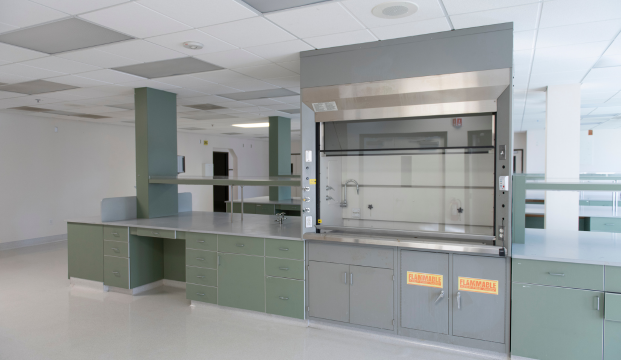In laboratory environments, one size certainly doesn’t fit all. When experiments involve a variety of chemicals and equipment, it’s important to personalize essential safety tools like fume hoods. These pieces of equipment are vital for keeping researchers safe and maintaining a controlled lab environment. When it comes to customizing fume hoods to match specific lab needs, there are several factors to think about, such as design, ventilation, airflow, materials, what lab workers require, and when customization is really necessary.
Design Specifications: Meeting the Lab’s Unique Requirements
Fume hoods are the first line of defense against hazardous vapors and gases. Their effectiveness greatly depends on tailoring their design to fit the specific lab activities. For example, if a lab handles corrosive chemicals, they should use hoods made from materials that resist corrosion, such as stainless steel or specialized polymers. Also, if a lab needs to frequently use and move around a lot of equipment, they might choose a bigger workspace to comfortably accommodate their larger setups.
Ventilation Standards: Ensuring Air Quality and Personnel Safety
Adhering to ventilation standards is non-negotiable when customizing fume hoods. The ANSI/AIHA Z9.5 standard and ASHRAE 110 testing methods provide guidance on airflow rates, hood face velocities, and containment performance. For example, chemical laboratories might require a higher face velocity to ensure proper containment, while microbiological research facilities may focus on maintaining laminar airflow to prevent cross-contamination.
Airflow Requirements: Precision in Handling Air Movement
The airflow within a fume hood significantly affects its performance. Depending on the substances being handled, custom airflow patterns might be necessary. In cases where heavy chemicals are used, a vertical sash design with directed airflow can prevent the escape of hazardous compounds. On the other hand, labs working with fine powders might choose horizontal airflow patterns to minimize the risk of particles spreading.
Material Options: Selecting the Right Components
The choice of materials plays a crucial role in ensuring both the longevity and safety of a customized fume hood. From the interior lining to the work surface, every component should be selected based on the chemicals and processes performed. High-density polyethylene, for instance, offers excellent chemical resistance and durability. On the other hand, Epoxy Resin might be ideal for labs dealing with radioactive materials due to its radiation resistance.
User Needs: Adapting to Researchers’ Requirements
Understanding the specific needs of researchers is the cornerstone of effective fume hood customization. Ergonomics plays a vital role here. Height-adjustable work surfaces, sash mechanisms that minimize strain, and lighting enhancements are all potential features that cater to researchers’ comfort and productivity. In addition, integrating electrical outlets, data ports, and gas connections directly into the fume hood can streamline experimental setups.
Instances Requiring Customization: When Off-the-Shelf Won’t Suffice
Customizing a fume hood becomes a necessity in several scenarios:
Unique Processes: Laboratories with unconventional procedures that produce unusual chemicals need special safety measures.
Space Constraints: Labs with limited space might require compact fume hoods designed to fit seamlessly without compromising performance.
Sensitive Experiments: Certain experiments might require precise temperature and humidity control, which can be achieved through customized ventilation systems.
Advanced Equipment: Labs employing specialized equipment often need custom hoods to accommodate these tools and ensure efficient airflow.
Safety and Efficiency through Customization
In the world of scientific research, safety and precision are incredibly important. Customizing fume hoods to suit the specific needs of a laboratory is like making a valuable investment. It pays off by making experiments safer, more efficient, and by saving valuable resources. By considering factors like design, ventilation, airflow, materials, and what the lab users require, laboratories can create specialized solutions that help researchers push the boundaries of knowledge while keeping everyone safe in their controlled environments.


